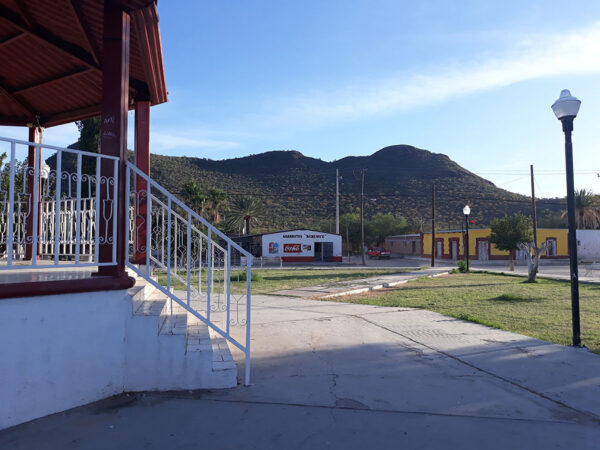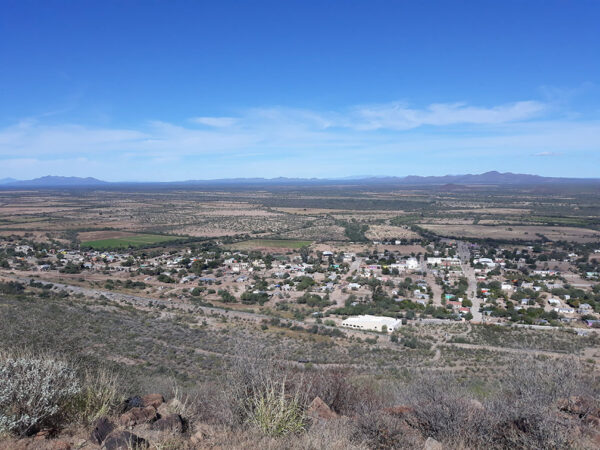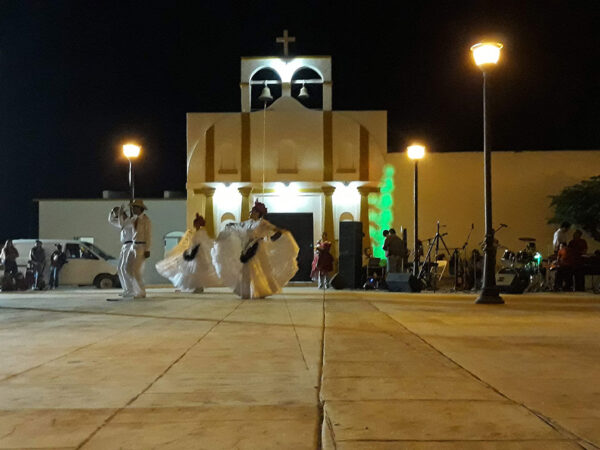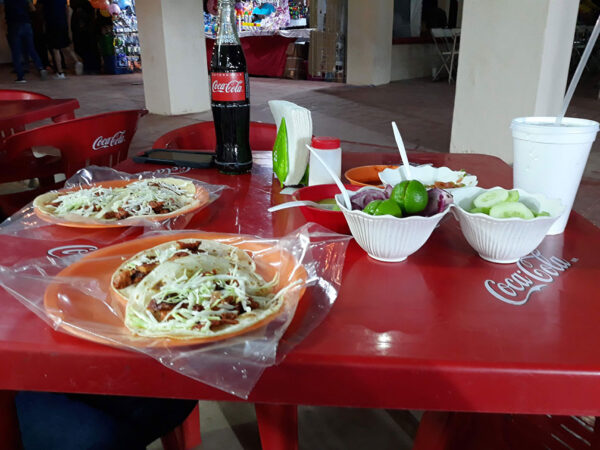
Cerro de Trincheras and the Town of Trincheras, Sonora
Ceramic analyst Hunter Claypatch conducted his doctoral research on ceramic technology from northern Sonora and spent several months living in the town of Trincheras, Sonora. Here, he highlights the region’s rich archaeology and culture (and tacos).
Cerro de Trincheras is a terraced volcanic archaeological site located within the town of Trincheras, Sonora. Sadly, although this site is considered one of the most important archaeological sites in northern Mexico, folks from north of the border seldom make the 3 ½ hour drive from Tucson to pay it a visit.
Between 2019 and 2022, I spent over fifteen months living in Trincheras for my dissertation research. During this time, I gained a love for the region’s archaeology, the modern town of Trincheras, and for the deep understanding that local community holds for their landscape and archaeological past. I also returned to Tucson with my second Sonoran cat, Misha.
Trincheras is a small town, made up of less than 2,000 inhabitants and known for cattle raising and famous cheese making. If you visit, be prepared for some wonderful carne asada and quesadillas! The town is located along the Rio Magdalena, a river that has provided local inhabitants with dependable water for thousands of years. Since its formal establishment in the late 1700s, the town has moved to avoid the river’s floodplain. If you look carefully on the outskirts of Trincheras, you’ll encounter the remains of historic structures and the old cemetery. Trincheras purportedly was also home to Joaquin Murrieta, the nineteenth century Robin Hood-like character of northern Mexico and inspiration for the fictional character Zorro. Every year, a local festival is held in his honor and many residents of Trincheras still bear his last name.
As you approach Trincheras, the prominent archaeological site of Cerro de Trincheras is clearly visible. The site is comprised of over 900 terraces, a cremation cemetery at the base of the hill, and several prominent structures—including El Caracol, which is located at the very top. Cerro de Trincheras was first described by Europeans in the late seventeenth century. The name derives from seventeenth century Spanish, where “trincheras” was used as a term for fortifications (not the modern translation of “terraces”).
Over the next 300 years, Cerro de Trincheras was occasionally described by geographers and archaeologists before becoming the ‘type site’ for the precolonial Trincheras tradition. It was not until the 1990s that a binational archaeological team conducted the first formal investigations. This research demonstrated that the site was primarily occupied between 1300 and 1450 CE, with extensive evidence that the residents lived with a social hierarchy, craft specialization, and long-distance trade.
In 2011, Centro INAH Sonora opened a public museum, curation facility, and laboratory at the base of Cerro de Trincheras. A nearby research house also serves as a home for visiting researchers or excavation crews. This museum, formally called Centro de Visitantes de la Zona Arqueológica Cerro de Trincheras, is one of only two on-site museums in the state of Sonora. It houses a wonderful permanent exhibit which showcases the history of the precolonial Trincheras tradition and the excavation history at the site. Elsewhere, large rotating galleries have showcased countless exhibits—including local participation in archaeological research, traveling photography, and the fossil remains of a nearly complete mammoth!
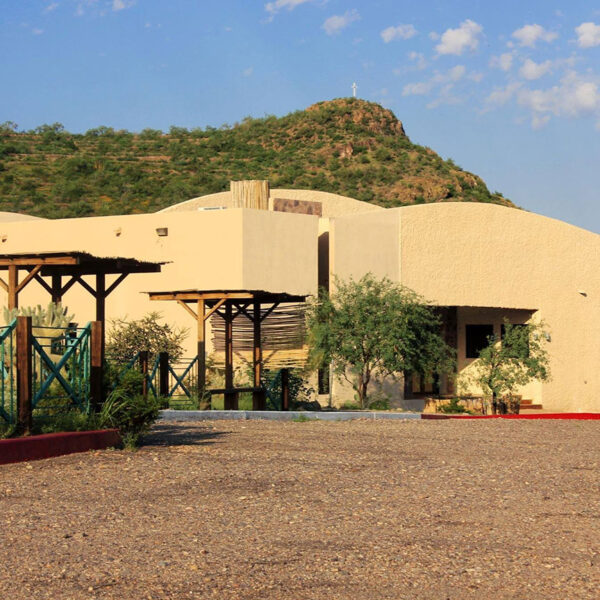
Centro de Visitantes de la Zona Arqueológica Cerro de Trincheras (from the museum’s Facebook page):
An interpretive trail was also constructed for visitors to travel up the site. It can be a bit of a scramble to the top of the hill, but once there you’ll gain a wonderful view of the town, El Caracol, and the vast expanse in every direction.
Although Cerro de Trincheras may be the most famous archaeological site in the area, it is far from the only one. The sprawling site of La Playa is located only a few kilometers away. La Playa is primarily known for occupation during the Early Agricultural Period (2100 BCE-50 CE), but has evidence of continued occupation spanning several thousand years. If you walk anywhere on the site, you’ll encounter beautiful purple-painted pottery fragments and shell jewelry fragments that were traded in from the Sea of Cortez.
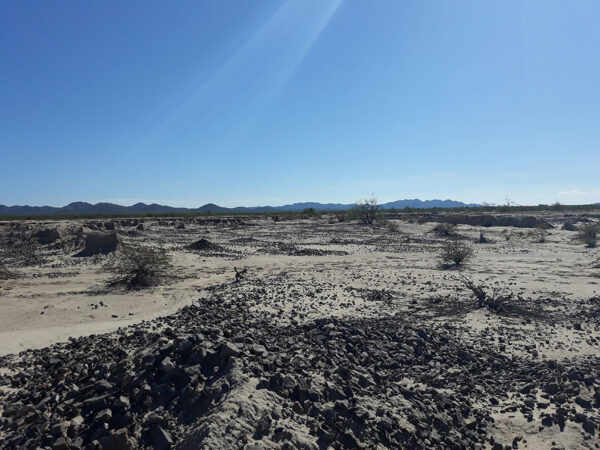
The eroded and expansive site of La Playa is covered with ceramics, shell, and fire-cracked rocks … all evidence of human occupation spanning back several thousand years.
Even closer to Cerro de Trincheras is Cerro La Nana, another terraced volcanic site with beautiful petroglyphs. No formal excavations have been done at Cerro La Nana, but surface collections suggest that it was occupied before Cerro de Trincheras. Both La Playa and Cerro La Nana are accessible, but you will need one of the museum’s staff, or an employee of Centro INAH Sonora, to take you.
The rich archaeological past within Trincheras is the source of great pride to the local community. Local school groups are taught of the importance of archaeological preservation and, unlike in the Southwestern United States, locals often assist with excavations or artifact processing. This has created a community that is extremely knowledgeable about their archaeological past.
Although most tourists travel to Trincheras to visit Cerro de Trincheras, there is plenty to do while you’re there … especially if you visit during the town’s feast days for San Raphael in October. During this time, the town is bustling with live music, vendors, and horse races. At any time of year, be sure to have some of Don Ricardo’s carne asada tacos in the second plaza … you won’t be disappointed!


